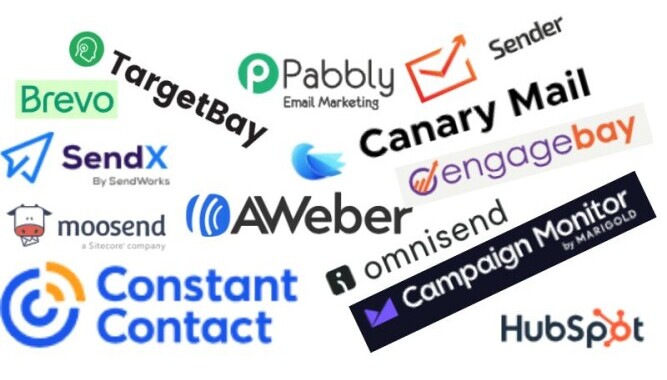
An email marketing strategy is essentially your game plan for reaching out to, engaging with, and retaining your customers through the power of their inbox. You will want to think through your objectives, craft the right messages, and deliver them in a way that connects with your audience.
In other words, before you write your first email for your autoresponder, you will want to know precisely what your messaging will be and why you are doing it. Sometimes it’s best to start at the end and work back to the welcome email.
For instance, you might want to accomplish several objectives with your sequence.
- Relay solid, actionable advice, instruction, information, etc. to give your readers usable knowledge, great products, and actionable how to advice.
- Be helpful, relatable, and genuine enough to retain your blog’s readership and email subscription membership.
- Grow your list and make sales.
Why is this important? Without a clear strategy, your email marketing efforts can feel scattered and ineffective. You want a cohesive plan that aligns with your overall business goals so that every email you send has a purpose and a clear path to achieving it.
A solid email marketing strategy includes a few key components.
- First, there’s your goal. Are you looking to boost sales, increase brand awareness, or maybe nurture your leads? Knowing your target lets you tailor your efforts accordingly.
- Then, there’s your audience – who they are, what they care about, and what content will keep them engaged. Segmentation can help break your audience into smaller groups with similar interests or behaviors.
- Next up, you’ve got your content. This is the meat of your strategy, the stuff your audience actually reads. Content should be engaging, relevant, and provide real value. Balance promotional content with informative or entertaining pieces to keep your subscribers opening your emails.
- Lastly, don’t forget about metrics. Tracking metrics like open rates, click-through rates, and conversions will give you a clear idea of what’s working and what’s not. This data helps you tweak and improve your strategy over time, making each campaign more successful than the last.
Aligning your email marketing strategy with your overall business goals is crucial. Think of it as setting the GPS for your campaigns.
When your emails are in sync with your broader objectives, you’re not just sending messages – you’re driving your business forward. For instance, if your goal is to increase sales, your emails might highlight new products, offer discounts, or showcase customer testimonials.
At the end of the day, an effective email marketing strategy is about more than just shooting out emails. It’s about creating a coherent plan that ties into your bigger business picture, engages your audience, and turns those casual readers into loyal customers.
Exploring the 4 Types of Email Marketing
Email marketing isn’t a one-size-fits-all kind of deal. There are different types of email campaigns, and each one serves a unique purpose. Knowing which type to use and when can make a big difference in your campaign’s success.
First, let’s talk about transactional emails.
These are the bread and butter of customer interactions. It includes order confirmations, receipts, and any kind of notice confirming an action. They keep your customers in the loop and are essential for building trust. While they might seem basic, they offer a great opportunity to reinforce your brand identity with every touchpoint.
Some common examples of transactional emails include:
- Order confirmations: Sent after a purchase to confirm the order details.
- Shipping notifications: Informing the recipient about the status of their shipment.
- Password reset requests: Providing a link or instructions to reset a password.
- Account alerts: Notifications about account activity, such as account creation or subscription renewals.
- Customer service responses: Replies to inquiries or support requests.
Next are promotional emails. These are the emails you send to drive sales and offers.
Think discounts, new product launches, and special deals. These emails are flashy, exciting, and designed to get your customers clicking through to your site. The key is to make them enticing without being too pushy. No one likes a hard sell.
Then, there are lifecycle emails.
These are tailored to where a customer is in their position with your brand. It might be a welcome email for a new subscriber, a re-engagement email for someone who hasn’t interacted in a while, or a thank you email after a purchase. They’re personalized and timed to perfection, making your customers feel valued and appreciated.
Finally, we have newsletter emails.
These are your regular updates filled with content like company news, blog posts, or industry insights. They keep your audience informed and engaged with your brand on a consistent basis. Newsletters should be informative and relevant, offering value beyond just your products or services.
Choosing the right type of email depends on your specific business needs and goals. A mix of these email types often works best, ensuring you reach your audience at every stage of their membership with relevant and engaging content.
As an affiliate marketer at Wealthy Affiliate Marketing, I know email lists are integral to learning how to build an affiliate marketing business. If you are interested in online business, look at Wealthy Affiliate for free here.
Crafting the Best Email Marketing Campaign
Creating a top-notch email marketing campaign is more of an art than a science. Success comes from a blend of creativity, strategy, and data. Here’s how to go about it.
Firstly, focus on your subject line. It’s the first thing people see, and it can make or break your open rates. Aim for something catchy yet relevant. A little bit of intrigue goes a long way, but make sure it accurately reflects the content of your email.
I think we’ve all seen these subject lines before:
- “Don’t Miss Out: 50% Off Ends Tonight!”
- “John, Your Exclusive Invite Inside ”
- “Top 10 Tips for Boosting Your Sales”
- “Ready for a Change? See What’s New!”
- “How Can You Improve Your Marketing Strategy?”
- “Unlock Your Special Offer Today! ”
- “Last Chance to Save Big on Your Favorite Items!”
These are pretty good examples of copywriting. Copywriting is something to consider if you plan to do business online. Content creation and copywriting go hand in hand when trying to make sales.
Tips for Crafting Effective Subject Lines:
- Keep it Short and Sweet: Aim for 6-10 words or around 50 characters.
- Create a Sense of Urgency: Use words like “Now,” “Today,” or “Limited Time.”
- Personalize: Include the recipient’s name or location.
- Be Clear and Specific: Let the recipient know what to expect inside.
- Use Numbers and Lists: Numbers can make your subject line stand out.
- Ask a Question: Engage the recipient’s curiosity.
Next, personalize your emails. Use the recipient’s name and tailor the content to their interests and behaviors. Initially, this might seem a little disingenuous, but personalized emails can boost engagement significantly, making your subscribers feel like you truly understand and value them.
Crafting compelling content is crucial. The body of your email should be clear, concise, and engaging. Use a mix of text, images, and possibly even videos to keep things interesting.
Remember to include a strong call to action (CTA) that guides the reader to what to do next. Here are ten strong CTA examples:
- Shop Now: Direct and to the point, perfect for e-commerce.
- Get Started Today: Encourages immediate action.
- Download Your Free Guide: Offers something valuable in exchange for action.
- Sign Up for Exclusive Updates: Promotes a sense of exclusivity.
- Claim Your Discount: Highlights a special offer.
- Join Our Community: Invites the audience to be part of something.
- Learn More: Encourages further exploration.
- Book Your Appointment: Ideal for service-based businesses.
- Subscribe Now: Great for newsletters or subscription services.
- Contact Us Today: Encourages direct communication.
Now, let’s talk design. Your email must look good on any device, so responsive design is non-negotiable. A clean, visually appealing layout can make your email more enjoyable to read and increase the likelihood of your CTA being clicked.
Take a page out of successful case studies. Look at brands that have nailed their email marketing campaigns and learn from their successes. What did they do differently? How did they engage their audience? These insights can help you shape your campaign.
Avoid common pitfalls. These include excessive use of caps, too many exclamation points, or spammy phrases. Also, be cautious with frequency; you don’t want to overwhelm your subscribers with too many emails.
Remember, there are warm bodies on the other end of your emails, and they have brains and life experience. Treat them how you want to be treated, and you’ll be legendary.
Utilize data and feedback to refine your approach. Track key metrics like open rates, click-through rates, and conversions. Note what works and what doesn’t, and continuously tweak your content, design, and strategy based on performance.
Implementing the 7 Key Email Marketing Strategies
Building a quality email list is the foundation of any effective email marketing campaign. Start by ensuring your data collection methods are compliant with privacy regulations. Whether through sign-up forms, lead magnets, or social media, make sure you’re attracting subscribers who genuinely want to hear from you.
Segmenting your audience allows you to send tailored messages to different groups. One-size-fits-all emails can feel impersonal and irrelevant, so break your list down into segments based on behavior, demographics, or past interactions. This way, your emails are more likely to connect with each reader.
Crafting compelling subject lines can significantly boost your open rates. Your subject line must grab attention and entice readers to open your email. Keep it short, relevant, and intriguing. Testing different approaches can reveal what resonates best with your audience.
Creating valuable content is all about providing what your readers want and need. Your content should educate, entertain, or solve a problem for your audience. Balance promotional content with informational or entertaining pieces to keep readers engaged over the long haul.
Automating your email campaigns can save time and ensure consistent communication. Tools like auto-responders and drip campaigns help maintain contact with your audience without the need for manual effort. Automation ensures that your audience gets timely and relevant messages.
A/B testing and analyzing results let you see what works best. Test different elements like subject lines, email copy, images, and CTAs. Analyzing the results can help you fine-tune your messages and strategies over time, making each campaign more effective than the last.
Ensuring compliance with email marketing laws and regulations is non-negotiable. Familiarize yourself with the laws in your region, such as GDPR in Europe or CAN-SPAM in the U.S.
Compliance keeps you out of legal trouble and builds trust with your audience.
I’ll be happy to answer any questions you have for me below. Take care.
Dave

Yourturnmarketing.com
